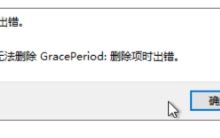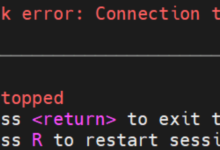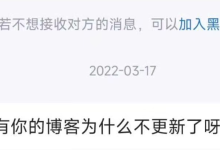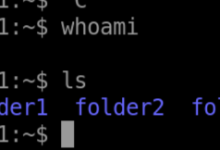这个方法将直接处理从URL下载数据并将其保存到文件的整个过程。下面是一个这样的方法示例:
import java.io.FileOutputStream;
import java.io.IOException;
import java.io.InputStream;
import java.io.OutputStream;
import java.net.HttpURLConnection;
import java.net.URL;
public class Downloader {
public static void downloadAndSave(String urlString, String filePath) {
InputStream in = null;
try {
URL url = new URL(urlString);
HttpURLConnection connection = (HttpURLConnection) url.openConnection();
connection.setRequestMethod("GET");
connection.setUseCaches(false);
connection.setRequestProperty("Content-Type", "application/json"); // 或者其他适当的MIME类型,或者根据需求移除
connection.setConnectTimeout(60000);
connection.setReadTimeout(60000);
// 连接服务器
connection.connect();
// 检查响应码是否为200
if (connection.getResponseCode() == HttpURLConnection.HTTP_OK) {
in = connection.getInputStream();
// 使用try-with-resources来自动关闭OutputStream
try (OutputStream out = new FileOutputStream(filePath)) {
byte[] buffer = new byte[4096];
int bytesRead;
// 从输入流中读取数据,并写入到文件输出流中
while ((bytesRead = in.read(buffer)) != –1) {
out.write(buffer, 0, bytesRead);
}
}
// 注意:由于使用了try-with-resources,OutputStream会在这里自动关闭
// 但我们仍然需要确保InputStream在方法结束时被关闭
} else {
System.out.println("Failed to download file: HTTP error code " + connection.getResponseCode());
}
} catch (IOException e) {
e.printStackTrace();
} finally {
// 关闭InputStream
if (in != null) {
try {
in.close();
} catch (IOException e) {
e.printStackTrace();
}
}
}
}
// 示例用法
public static void main(String[] args) {
String url = "http://example.com/somefile.txt";
String filePath = "downloaded_file.txt";
downloadAndSave(url, filePath);
}
}
在这个downloadAndSave方法中,我们首先尝试从给定的URL下载数据。如果HTTP响应码为200(OK),我们就从连接中获取InputStream,并使用try-with-resources语句来自动关闭FileOutputStream,同时将数据从InputStream写入到文件中。无论操作成功与否,我们都会在finally块中关闭InputStream,以确保资源被正确释放。
请注意,我修改了setRequestProperty的键从"Charset"到"Content-Type",但通常对于GET请求来说,设置"Content-Type"并不是必需的,因为它是由请求体(对于GET请求来说,请求体是空的)的媒体类型决定的。然而,如果你正在向服务器发送POST或PUT请求,并包含请求体,那么设置正确的"Content-Type"就非常重要了。在这个例子中,我保留了它,但你可能想要根据实际需求进行调整或移除它。如果你只是想从服务器下载文件,那么通常不需要设置"Content-Type"。
实现文件下载并保存的功能,除了使用HttpURLConnection之外,还有其他几种常见的方法。以下是其中两种方法的示例:
import java.io.FileOutputStream;
import java.io.IOException;
import java.io.InputStream;
import java.net.URL;
public class SimpleDownloader {
public static void downloadAndSave(String urlString, String filePath) {
try (URL url = new URL(urlString);
InputStream in = url.openStream(); // 注意:这里使用的是openStream(),它简化了HTTP GET请求
FileOutputStream fos = new FileOutputStream(filePath)) {
byte[] buffer = new byte[4096];
int bytesRead;
while ((bytesRead = in.read(buffer)) != –1) {
fos.write(buffer, 0, bytesRead);
}
} catch (IOException e) {
e.printStackTrace();
}
}
public static void main(String[] args) {
String url = "http://example.com/somefile.txt";
String filePath = "downloaded_file.txt";
downloadAndSave(url, filePath);
}
}
以下是一个使用Apache HttpClient下载文件的示例:
import org.apache.http.client.methods.HttpGet;
import org.apache.http.impl.client.CloseableHttpClient;
import org.apache.http.impl.client.HttpClients;
import org.apache.http.util.EntityUtils;
import java.io.FileOutputStream;
import java.io.IOException;
public class HttpClientDownloader {
public static void downloadAndSave(String urlString, String filePath) {
try (CloseableHttpClient httpClient = HttpClients.createDefault();
HttpGet httpGet = new HttpGet(urlString);
FileOutputStream fos = new FileOutputStream(filePath)) {
httpClient.execute(httpGet, httpResponse -> {
try (InputStream inputStream = httpResponse.getEntity().getContent()) {
byte[] buffer = new byte[4096];
int bytesRead;
while ((bytesRead = inputStream.read(buffer)) != –1) {
fos.write(buffer, 0, bytesRead);
}
}
return null; // 这里返回null,因为我们不需要HttpResponse的进一步处理
});
} catch (IOException e) {
e.printStackTrace();
}
}
// 注意:上面的代码示例使用了HttpClient的异步执行方式(通过execute方法的lambda表达式),
// 但这实际上并不是异步的,因为lambda表达式内部是同步执行的。
// 对于真正的异步下载,你可能需要使用HttpClient的异步API(如FutureCallback等)。
// 为了简化,这里提供一个更直接的同步下载示例:
public static void downloadAndSaveSync(String urlString, String filePath) throws IOException {
try (CloseableHttpClient httpClient = HttpClients.createDefault();
HttpGet httpGet = new HttpGet(urlString);
FileOutputStream fos = new FileOutputStream(filePath)) {
CloseableHttpResponse response = httpClient.execute(httpGet);
try {
InputStream inputStream = response.getEntity().getContent();
byte[] buffer = new byte[4096];
int bytesRead;
while ((bytesRead = inputStream.read(buffer)) != –1) {
fos.write(buffer, 0, bytesRead);
}
} finally {
response.close();
}
}
}
public static void main(String[] args) {
String url = "http://example.com/somefile.txt";
String filePath = "downloaded_file.txt";
// 使用同步方法
try {
downloadAndSaveSync(url, filePath);
} catch (IOException e) {
e.printStackTrace();
}
}
}
请注意,上面的downloadAndSave方法实际上并没有以异步方式工作,因为lambda表达式内的代码是同步执行的。我提供了一个名为downloadAndSaveSync的同步方法作为替代,它更直接地展示了如何使用HttpClient进行文件下载。如果你需要真正的异步处理,你应该查看HttpClient的异步API文档。
 网硕互联帮助中心
网硕互联帮助中心








评论前必须登录!
注册